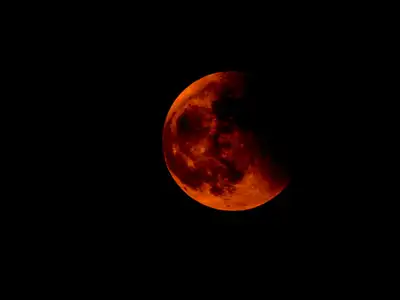A lunar eclipse occurs during a full moon, when the Earth comes directly between the Sun and the Moon. India will witness a total lunar eclipse today, a rare celestial event which will also be visible in Australia, Middle East and Europe. A lunar eclipse takes place during a full moon phase, when the Earth comes directly between the Sun and the Moon. The shadow of the Earth falls on the lunar surface during this period, thus reducing the Moon’s brightness.
A reddish tint is also visible during the lunar eclipse, which is why the event is also called the ‘Blood Moon’. The next total lunar eclipse will occur on March 3, 2026, according to space scientist Dr Suvendu Patnaik said.
Can the lunar eclipse be seen with naked eye?
Dr Patnaik said that people can witness the lunar eclipse through naked eye across India, if the sky is cloudless during that time. “The current eclipse is a long duration eclipse which can be seen through naked eye throughout India if there is a cloudless sky,” Patnaik said.
He added that the eclipse would start at around 9.37 pm, with Earth’s shadow completely covering the lunar surface around 11 pm. Patnaik said that the moon would become “completely red”, adding that it would remain that way till 12.22 am. Senior Planetarium Engineer at Nehru Planetarium, OP Gupta, had earlier said that the eclipse would peak at 11:48 pm, lasting for 48 minutes. “People can watch it easily. It will not harm the eyes…You can even eat and drink during it,” Gupta stated.
Gupta said that there was no need to take precautions, adding that it was a misconception that food spoils during a lunar eclipse. The planetarium engineer said that the eclipse would also be visible in Pakistan and China, adding that the penumbral (initial) phase in Delhi would begin at 8. 58 pm. “The partial eclipse will begin at around 9.57 pm… It will peak at around 11.48 pm…The complete lunar eclipse will end at 12:22 PM,” Gupta said.



